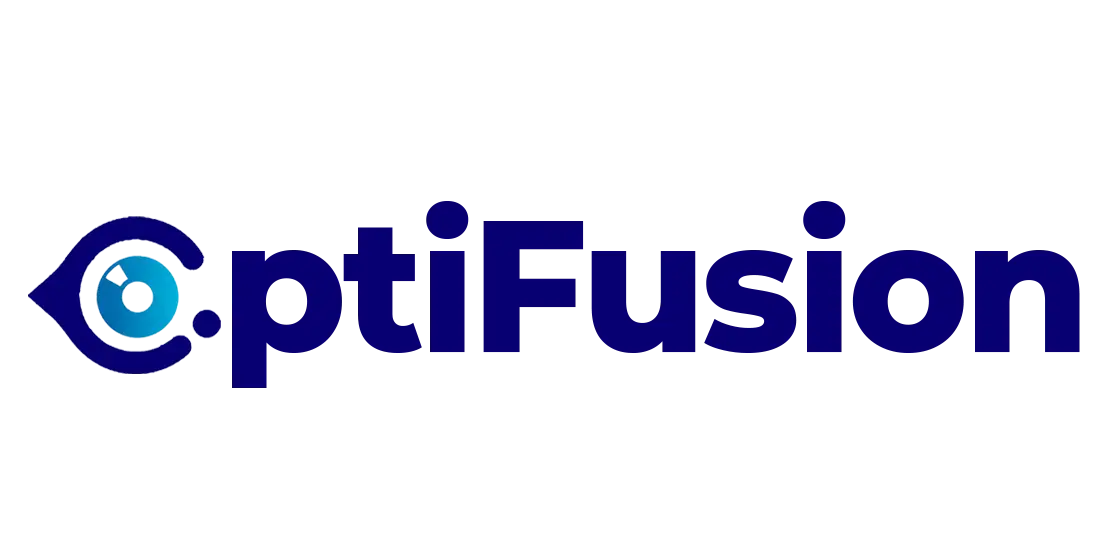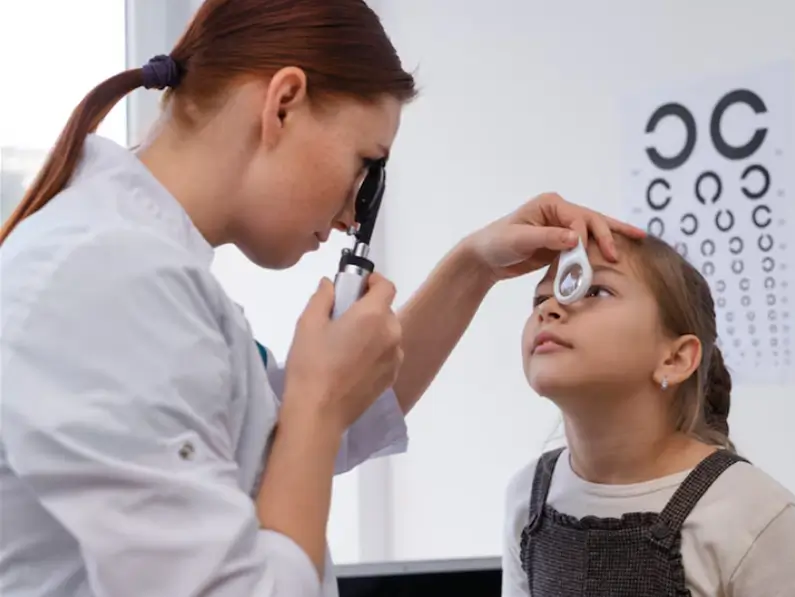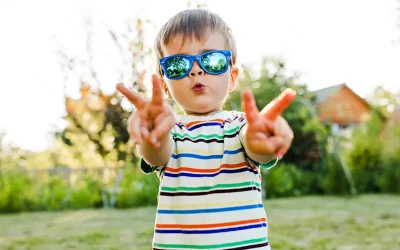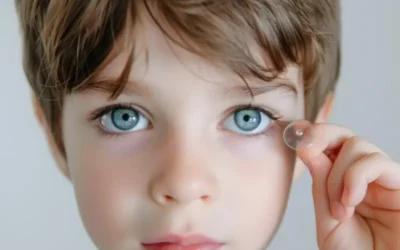Have you ever noticed your child squinting while reading or tilting their head to one side when playing catch? These might be signs of developmental vision problems that go beyond needing glasses. Vision therapy for children is a customized, doctor‑supervised “workout” for the eyes and brain designed to improve how visual information is gathered, processed, and responded to. Think of it like physical therapy—but for your child’s visual system. By harnessing the brain’s natural ability to rewire itself (neuroplasticity), vision therapy uses targeted exercises to strengthen weak visual skills and promote healthy binocular function from an early age.
Understanding Developmental Vision Problems
Many parents assume that if their child sees 20/20 on an eye chart, all is well. But vision isn’t just clarity—it’s about how the eyes team up and communicate with the brain. Developmental vision problems can affect focusing, tracking, eye teaming, and processing speed, leading to headaches, reading difficulties, and even behavioral challenges that mimic ADHD.
- Focusing Skills: Can your child switch focus quickly between the board and their desk?
- Eye Teaming: Do both eyes work together, or does one wander?
- Tracking: Is your child losing their place when reading or skipping words?
Catching these issues early, ideally between ages 6–12 when the visual system is most adaptable can prevent long‑term struggles in school and sports.
Common Vision Disorders Treated
Vision therapy tailors its approach to specific conditions. Here are the big three:
Amblyopia (Lazy Eye)
Often called “lazy eye,” amblyopia happens when the brain favors one eye, causing the other to become weaker. If left untreated before age 7, permanent vision loss can occur in the weaker eye. Amblyopia treatment in vision therapy combines eye‑patching with engaging exercises (like tracking moving lights or games on a computer screen) to stimulate and strengthen the weaker eye.
Strabismus (Crossed Eyes)
When one eye turns inward or outward, the brain gets two conflicting images. To avoid double vision, it may suppress one image, leading to depth perception issues. Vision therapy uses prism glasses, eye‑movement drills, and balance activities to train both eyes to work together, potentially reducing the need for surgery and improving binocular function.
Convergence Insufficiency
Imagine your child reading a favorite book but struggling to keep their eyes pointed on the words. Convergence insufficiency makes near‑work exhausting—headaches, blurred vision, and skipping lines are common. Studies show that a mix of in‑office convergence exercises (like pencil push‑ups) and at‑home computer games resolves symptoms in over 70% of children.
How Vision Therapy Works
At its core, vision therapy leverages neuroplasticity—the brain’s remarkable ability to form new neural connections. Just as practicing scales on the piano strengthens finger dexterity, repeating visual drills strengthens the pathways between your child’s eyes and brain.
Neurological Basis and Neuroplasticity
Every eye movement and visual judgment relies on precise signals traveling to the visual cortex. Through repetitive, gradually challenging exercises, vision therapy rewires these pathways, improving communication speed and accuracy. Over time, activities that once felt awkward—like catching a ball or reading for long stretches—become second nature.
In‑Office vs. At‑Home Exercises
- In‑Office Sessions: Under the guidance of a developmental optometrist or pediatric ophthalmologist, your child works with specialized tools—prisms, balance boards, computer programs—to target core deficits.
- At‑Home Reinforcement: Much like homework after music lessons, short daily exercises (often game‑based or app‑driven) ensure progress continues between appointments. Consistency is key: just 10–15 minutes a day can yield dramatic improvements.
The Vision Therapy Process
Comprehensive Eye Examination
It all begins with a detailed eye exam that goes beyond 20/20 acuity. Tests assess:
- Binocular coordination
- Eye‑movement control
- Focusing flexibility
- Spatial perception
This battery of assessments pinpoints precise weaknesses and establishes a baseline for measuring progress.
Individualized Treatment Plans
No two children are the same, and neither are their therapy plans. Based on exam results, your child’s optometrist will devise a bespoke schedule of exercises, setting clear, measurable goals (for example, reducing convergence distance by 2 centimeters).
Duration and Frequency
Most children participate in 12–24 weeks of therapy, with weekly in‑office visits and daily at‑home practice. Younger kids sometimes need more time to build routine, while motivated older children may progress faster. Regular re‑evaluations help fine‑tune the plan—think of it as leveling up in a video game.
Benefits of Vision Therapy
Academic and Athletic Improvements
Improved visual skills often translate to reading without losing your spot, finishing homework faster, and participating more confidently in class. On the field or court, better eye‑hand coordination helps with catching, throwing, and tracking moving objects—giving your child a competitive edge.
Improved Eye Coordination and Comfort
When vision is smooth and effortless, headaches, eye strain, and fatigue become a thing of the past. Your child can enjoy longer study sessions and play without the nagging discomfort that comes from visual dysfunction.
Age Appropriateness and Early Intervention
While pediatric vision therapy is most effective between ages 6–12—when the brain’s plasticity is at its peak—even younger kids and adults can benefit. The earlier you address vision issues, the less likely they are to interfere with critical learning and social development windows.
Role of Parents and Educators
Success in vision therapy is a team effort:
- Parents: Keep exercise logs, celebrate milestones, and create a fun routine around at‑home drills.
- Educators: Watch for classroom signs (losing place in text, poor handwriting) and communicate concerns to parents and therapists.
This collaborative approach ensures consistency across home, school, and clinic environments.
Risks, Considerations, and Costs
Vision therapy is non‑invasive and generally low‑risk. You might see temporary eye fatigue or mild headaches as your child’s visual system adapts. Cost-wise, insurance coverage varies—many vision and medical plans cover at least part of developmental vision services. Always verify benefits and select a credentialed developmental optometrist or pediatric ophthalmologist for safe, effective care.
Conclusion
Vision therapy for children is more than just “eye exercises.” It’s a scientifically supported, personalized program that taps into the brain’s neuroplasticity to correct underlying visual dysfunctions. By intervening early and engaging parents, educators, and professionals, most children achieve lasting improvements in reading, coordination, and overall confidence. If your child struggles with focusing, eye teaming, or reading fatigue, vision therapy could be the missing piece to unlocking their full potential.
FAQ: Your questions answered
What age should my child start vision therapy?
Ideally between ages 6–12, when visual development is most adaptable, though younger kids and even adults can benefit with tailored programs.
How long does vision therapy take?
Most programs run 12–24 weeks, with weekly in‑office sessions and daily at‑home exercises. Progress depends on condition severity and consistency.
Is vision therapy painful or risky?
No—it’s non‑invasive. Some children experience temporary eye strain or mild headaches during early sessions, but serious risks are minimal.
Will my child still need glasses after vision therapy?
Vision therapy improves eye coordination and processing but doesn’t replace glasses for refractive errors. However, children often receive more accurate prescriptions post‑therapy.
Does insurance cover vision therapy?
Coverage varies by plan. Many vision and medical insurance policies cover at least a portion of developmental vision services—always check with your provider before starting.




